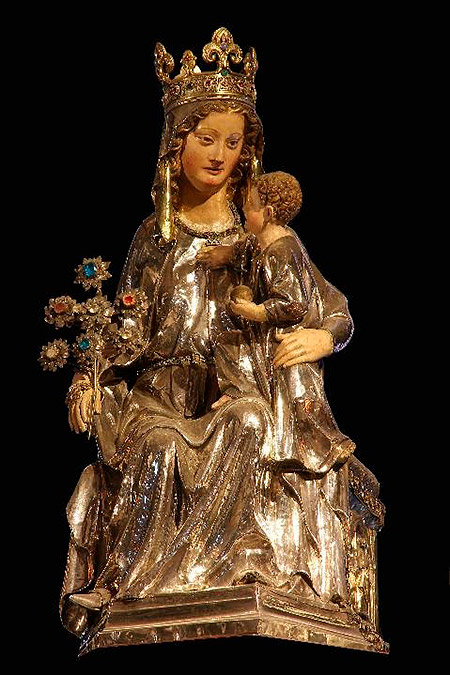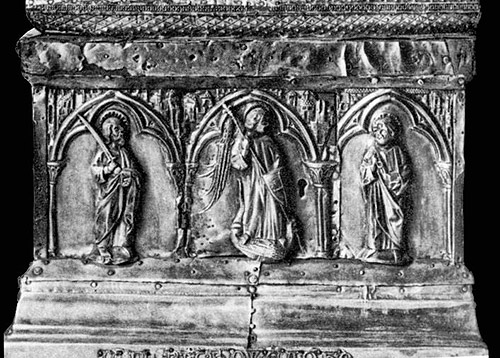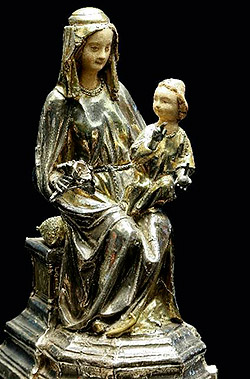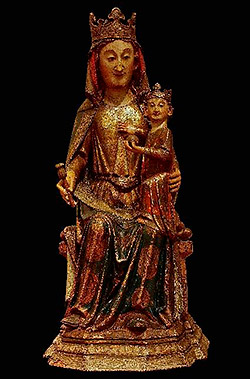26 September
Global Seminars & Invited Speaker Series
The Virgin Mother: Saint Mary of Roncesvalles and derived images
Clara Fernández-Ladreda Aguadé
University of Navarra
The first part of lecture analysed the titular Virgin of the old Hospital -today the Collegiate Church- of Roncesvalles, placing special emphasis on highlighting her exceptional nature within the panorama of Navarrese Marian imagery from the medieval period.

Our Lady of Roncesvalles
In this regard, it was mentioned that it was a mixed work - a wooden sculpture covered in silver, except for the faces and hands, which are polychrome - which was unusual in a French work from the Gothic period, and could be explained by the need to adapt it to the tastes of the commissioner and the recipients. It was mentioned that this was the earliest example of a Navarrese Marian image in which a genuinely maternal-subsidiary relationship is established, achieved thanks to the postures of Mary and Jesus and the exchange of gazes. Attention was drawn to the figurative decoration of the throne, which is unusual in the Marian imagery of the medieval period - with only four cases out of more than three hundred. Finally, reference letter was mentioned for its probable function as a tabernacle, with the presence of a compartment with a door located in the throne.

Our Lady of Roncesvalles. Detail of the throne.
The analysis concluded with the following: accredited specialization , that the work was imported from France, specifically from Toulouse, as attested by the registration on the back; that it was linked to the master and workshop of Rieux, based in that city but whose activity extended throughout Languedoc; that it was dated to between 1330 and 1350, a chronology attributed to the workshop in question; and that it was attributed to the priory of García Ibáñez de Viguria (1327-1346), who was to be its promoter.
The second part reviewed the images derived from it, stressing their concordance with the model, especially the most exceptional aspects that demonstrate this relationship. Among them, the Virgencita del Tesoro -also belonging to the Hospital-, which coincides with the titular image in its condition as a mixed work and in the figurative decoration of the throne, and that of Janáriz -today in the parish church of Santiago de la Chantrea-, which coincides with it in its postures, especially in that of the Child. Three other cases were mentioned: the one that has disappeared from Artanga, the one from Turrillas -currently in the Diocesan Museum of Pamplona-, which is very damaged, and the one from Urroz de Santesteban, which is of a popular nature.


Our Lady of the Treasure of Roncesvalles and Our Lady of Janariz.
